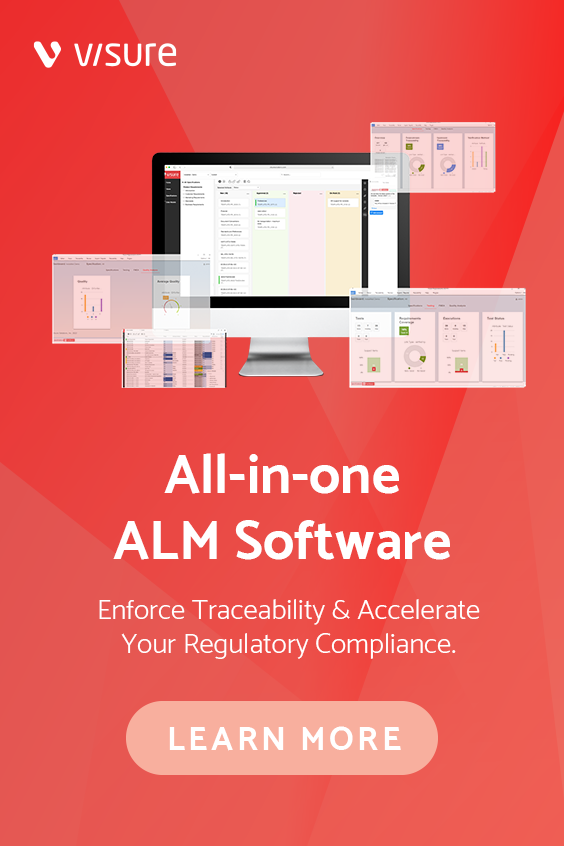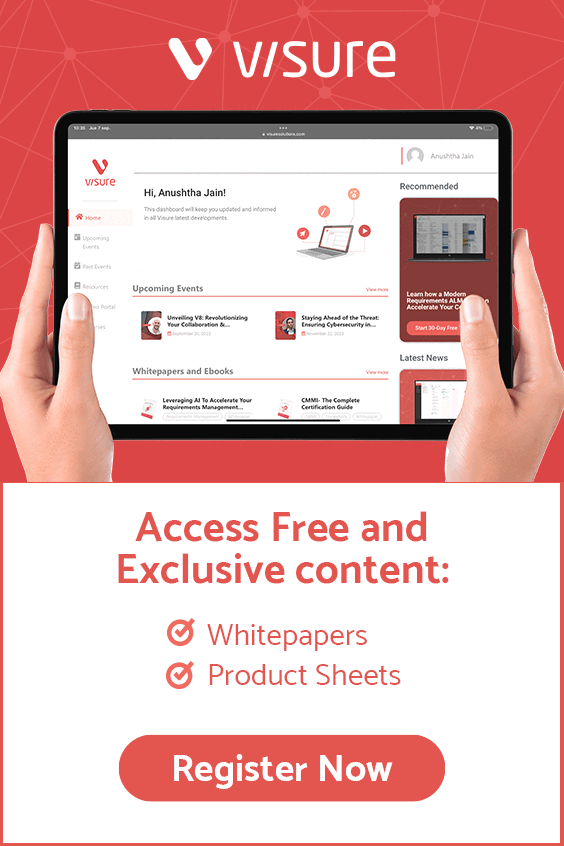Introduction
In the ever-evolving landscape of software development and project management, choosing the right requirements management tool is crucial for success. Two prominent players in this field are Visure and IBM DOORS (Dynamic Object-Oriented Requirements System). Both tools offer powerful features, but when it comes to making a choice, factors such as ease of transition and affordability play a significant role. In this article, we will delve into the comparison of Visure and IBM DOORS, making a case for a smoother transition and an affordable solution.
Understanding the Importance of Requirements Management
Requirements management is a critical aspect of any project, ensuring that the project team and stakeholders are aligned on what needs to be delivered. It involves capturing, analyzing, documenting, and tracking requirements throughout the project lifecycle. A robust requirements management tool is essential to streamline these processes, leading to better collaboration, reduced errors, and successful project delivery.
An Overview of Visure
Visure is a leading provider of requirements management solutions. Their platform, Visure Requirements, is designed to help organizations manage the complete requirements lifecycle efficiently. With features like traceability, impact analysis, and collaboration tools, Visure aims to provide a comprehensive solution for teams working on complex projects.
Key Features of Visure Requirements
- Traceability: Visure Requirements offers end-to-end traceability, allowing teams to link requirements to other project artifacts, such as test cases and design documents. This ensures that any changes made to requirements are reflected throughout the entire project.
- Collaboration: The platform facilitates collaboration among team members, enabling real-time communication and feedback. This feature is crucial for distributed teams or those working in different time zones.
- Customization: Visure Requirements is highly customizable, allowing organizations to adapt the tool to their specific needs. This flexibility is essential for projects with unique requirements processes.
- Integration: The tool integrates with various development and testing tools, creating a seamless workflow. This integration capability ensures that all aspects of the project are connected and updates are reflected across the board.
IBM DOORS: A Legacy in Requirements Management
IBM DOORS has been a stalwart in the requirements management arena for decades. Known for its robust features and widespread adoption in industries with complex projects, IBM DOORS has set the standard for requirements management tools.
Key Features of IBM DOORS
- Scalability: IBM DOORS is highly scalable and can handle large and complex projects with ease. This scalability makes it suitable for enterprises with diverse and intricate requirements.
- Configurability: The tool is highly configurable, allowing organizations to tailor it to their specific processes. This adaptability is crucial for industries with stringent regulatory requirements.
- Security: IBM DOORS places a strong emphasis on security, ensuring that sensitive project information is protected. This is particularly important for projects in industries such as healthcare and finance, where data confidentiality is paramount.
- Global Collaboration: With support for distributed teams, IBM DOORS facilitates global collaboration. This is essential for organizations with teams spread across different locations.
Transitioning from IBM DOORS to Visure: A Smoother Path
For organizations considering a switch from IBM DOORS to Visure, the process of transitioning plays a crucial role. A smooth transition minimizes disruptions to ongoing projects and ensures that teams can quickly adapt to the new requirements management tool. Several factors contribute to making the transition from IBM DOORS to Visure a seamless experience.
1. Data Migration Tools:
- Visure provides robust data migration tools that facilitate the transfer of data from IBM DOORS to Visure Requirements. These tools ensure that historical project data, including requirements, traceability links, and other artifacts, are accurately migrated.
2. Training and Support:
- Comprehensive training programs and support services are essential for helping teams transition smoothly. Visure offers training sessions and documentation to familiarize users with the features and functionalities of Visure Requirements.
3. Consultation and Planning:
- Visure’s consulting services assist organizations in planning the transition process. This involves understanding the current requirements management processes, identifying potential challenges, and creating a tailored plan for a successful transition.
4. Pilot Projects:
- Conducting pilot projects allows teams to test Visure Requirements in a controlled environment before fully committing to the transition. This phased approach helps identify and address any issues early on, ensuring a smoother transition.
5. Customization Capabilities:
- Visure’s high level of customization allows organizations to configure the tool to match their existing processes closely. This reduces resistance to change among team members and ensures a more natural adaptation to the new tool.
Affordability: A Key Consideration
In addition to a smooth transition, the affordability of a requirements management tool is a critical factor for many organizations. Cost considerations go beyond the initial investment and may include licensing fees, maintenance costs, and any additional expenses associated with the tool’s usage.
Visure’s Pricing Model:
- Visure offers a transparent pricing model, with options for both cloud-based and on-premises deployments. The pricing is based on the number of users and the specific features required. This flexibility allows organizations to choose a plan that aligns with their budget and project requirements.
IBM DOORS Pricing:
- IBM DOORS, being an enterprise-level solution, often comes with a higher upfront cost. The pricing is typically tailored to the specific needs and scale of the organization. However, ongoing maintenance and support costs can contribute significantly to the total cost of ownership.
Total Cost of Ownership (TCO):
- When evaluating the affordability of Visure and IBM DOORS, it’s essential to consider the total cost of ownership over the life of the project. This includes not only the initial licensing and implementation costs but also ongoing expenses such as maintenance, support, and any additional customization requirements.
The Role of Industry-Specific Considerations
Different industries have varying requirements and compliance standards, influencing the choice of a requirements management tool. Both Visure and IBM DOORS cater to a wide range of industries, but certain considerations may make one more suitable than the other for specific sectors.
Regulatory Compliance:
- For industries with stringent regulatory requirements, such as healthcare and aerospace, the configurability and security features of IBM DOORS may be a decisive factor. However, Visure’s customization capabilities can also make it a strong contender in these sectors.
Flexibility for Agile Processes:
- Organizations following agile development methodologies may find Visure more aligned with their processes. Visure’s collaboration features and customizable workflows are well-suited for agile teams, facilitating quick adaptation to changing requirements.
Legacy System Integration:
- In cases where integration with legacy systems is crucial, Visure’s flexibility in integration may be an advantage. Visure supports integration with various tools and systems, ensuring a cohesive development and project management ecosystem.
Conclusion
Choosing between Visure and IBM DOORS is a complex decision that depends on various factors, including the organization’s size, industry, budget, and specific project requirements. While IBM DOORS has a legacy of reliability and scalability, Visure brings modern features, customization capabilities, and an attractive pricing model to the table.
For organizations looking to transition from IBM DOORS to Visure, a smooth migration process is critical. Visure’s data migration tools, training programs, and consulting services aim to make this transition as seamless as possible. The flexibility and affordability of Visure further contribute to its appeal as a viable alternative to IBM DOORS.
In this webinar, you’ll get:
- An understanding of the pivotal role of requirements management in project success
- A deep dive into the key features of Visure and IBM DOORS, shedding light on their respective strengths
- Practical insights and strategies for a seamless transition, including data migration tools, training, and pilot projects
- A comprehensive look at the pricing models of Visure and IBM DOORS, evaluating the total cost of ownership over the project lifecycle
- An understanding of how industry requirements influence the choice between Visure and IBM DOORS
- And much more!


